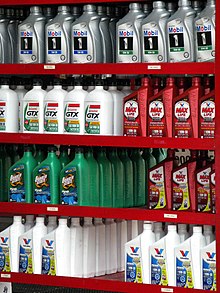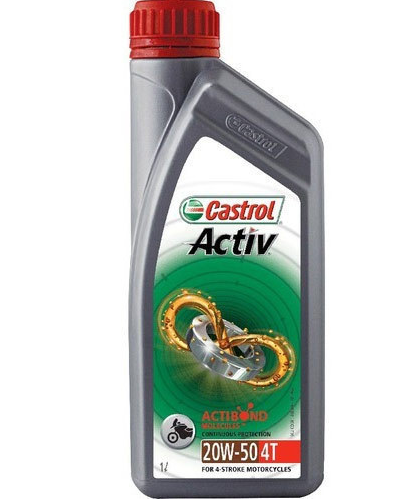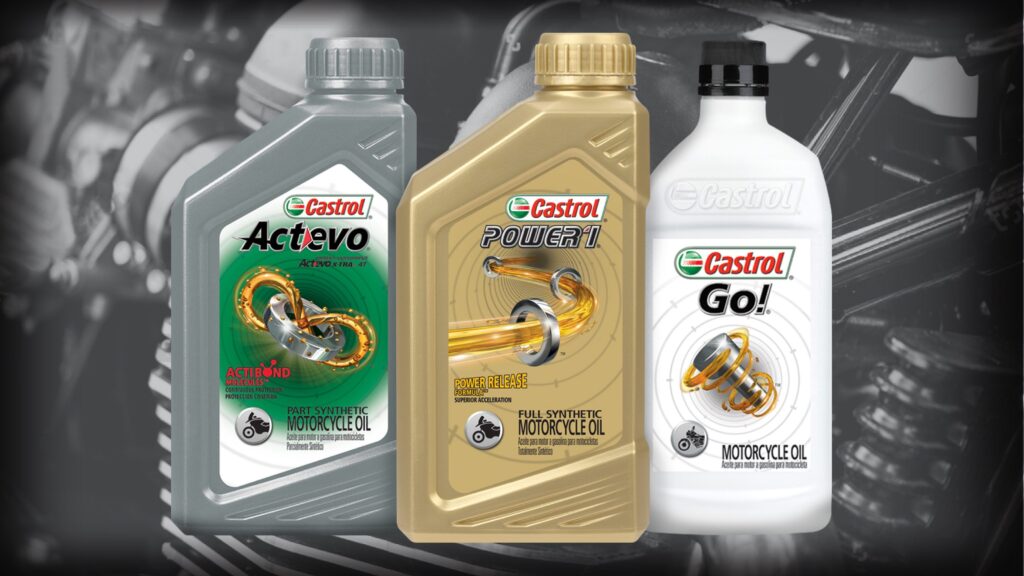Three main types of engine oils are conventional oil, synthetic oil, and synthetic blend oil. Use conventional oil for older engines, synthetic oil for high-performance engines, and a synthetic blend for a balance of performance and cost.
Choosing the right type of engine oil is crucial for the longevity and efficiency of your vehicle. Conventional oil, often recommended for engines with simple designs and higher mileage, provides a basic level of protection. Synthetic oil is engineered to provide superior performance, including in extreme temperatures, making it ideal for modern, high-performance engines.
Synthetic blend oil offers some of the advantages of synthetic oil without the full cost, making it a middle-ground choice for many drivers. This overview provides a starting point for understanding when to use each type, helping to ensure your engine is lubricated properly and runs smoothly.

Credit: www.cbac.com
Introduction To Engine Oils
Understanding engine oils is crucial for maintaining your vehicle. Engine oils lubricate engine components, reduce friction, and keep your car running smoothly. This guide delves into the different types of engine oils and their unique benefits.
Essential Role of Engine Oils
Engine oils perform several vital functions:
- Lubrication: They reduce wear and tear by preventing direct metal-to-metal contact.
- Cooling: Oils carry away heat from moving parts.
- Cleaning: They help remove engine sludge and varnish.
- Protection: Engine oils shield against rust and corrosion.
Breaking Down the Basics
The three main types of engine oils are:
- Conventional Oil: Best for older vehicles or routine driving conditions.
- Synthetic Oil: Created for high-performance and extreme temperatures.
- Synthetic Blend Oil: Mixes features of conventional and synthetic oils.
Choose an oil based on your vehicle’s needs and manufacturer’s recommendations.

Credit: www.toyotaofnorthcharlotte.com
Synthetic Engine Oils
Synthetic engine oils are the high-tech lubricants of choice for modern engines. Designed for optimal performance, synthetic oils provide superior protection compared to conventional oils. They are a top pick for drivers seeking peak engine efficiency and longevity. Understanding these oils is key to maintaining a vehicle’s health in challenging conditions.
Defining Synthetic OilsDefining Synthetic Oils
Synthetic oils are man-made lubricants created from chemically modified materials such as petroleum components, but the base is typically distilled and purified to ensure a higher quality. This processing results in a product featuring a uniform molecular size, which dramatically reduces friction and helps the engine run smoothly.
Advantages of Synthetic OilsAdvantages Of Synthetic Oils
- Decreased engine wear: Synthetic oils provide a stronger protective layer, keeping engine parts safe.
- Improved performance in extreme temperatures: Works well in both hot and cold weather.
- Longer oil change intervals: Last longer, requiring fewer changes and saving money over time.
- Greater engine cleanliness: Keeps engines cleaner by minimizing deposit accumulation.
- Better fuel economy: Lowers friction, which can lead to improved fuel efficiency.
Ideal Conditions for Synthetic Use
For drivers pushing their vehicles to the limit or operating in severe environments, synthetic engine oils are the best bet. Situations ideal for synthetics include:
- Towing or carrying heavy loads consistently.
- Driving in extremely hot or cold climates.
- High-performance vehicles demand peak lubrication.
- Extended periods between oil changes for long-distance drivers.
Conventional Engine Oils
Known for their straightforward approach to engine lubrication, conventional engine oils remain a popular choice. Crafted from refined crude oil, they provide a basic level of protection for engines. Whether you drive a low-mileage car or maintain a consistent routine, understanding these oils proves essential.
Characteristics Of Conventional Oils
- Viscosity Grades: Covers a range of temperatures.
- Additives: Includes detergents and dispersants.
- Refined Petroleum: Conventional oils come from crude oil.
Benefits Of Traditional Oil Selection
- Cost-Effective: Generally, less expensive than synthetic options.
- Standard Protection: Sufficient for many older or low-mileage engines.
- Availability: Widely accessible in most auto supply stores.
Best Scenarios for Conventional Oil Use
Several key scenarios stand out for when to choose conventional oils:
| Scenario | Relevance |
|---|---|
| Older Engine Models | Less complex engine designs may not require advanced lubricants. |
| Light Use | For vehicles that experience less demanding driving conditions. |
| Short Trips | Ideal where the engine doesn’t reach high operating temperatures often. |
Synthetic Blend Engine Oils
Synthetic Blend Engine Oils offer a middle ground for drivers. They combine the resilience and performance of synthetic oil with the affordability of conventional motor oil. These oils are an excellent compromise, providing improved protection and performance over traditional oils without the higher cost of full synthetics.
Combining The Best of Both Worlds
Synthetic blend oils merge synthetic and conventional base oils for enhanced resistance to oxidation.
- Better performance at low temperatures
- Enhanced protection during high-temperature operation
- Longer oil change intervals than conventional oil
Pros And Cons of Synthetic Blends
| Pros | Cons |
|---|---|
| Lower cost than full synthetics | Not as robust as full synthetics |
| Stronger engine protection than conventional oil | Shorter lifespan than full synthetics |
| Improved fuel efficiency | May not be suitable for all vehicles |
Optimal Situations for Synthetic Blend Application
The Synthetic Blend Engine Oils work best in the following scenarios:
- Vehicles with moderate mileage not requiring full synthetic.
- Drivers looking for a cost-effective upgrade from conventional oil.
- Cars operate at varied temperatures.
Viscosity Grades Explained
Engine oils slide through your car’s engine, creating a thin, slippery barrier between metal parts. This barrier needs just the right thickness, or viscosity. Picking the right oil involves understanding these numbers. Read More
Understanding Viscosity Numbers
Viscosity tells us how thick or thin an oil is. This affects how well it flows in different temperatures. Think about syrup in cold versus warm weather; this is similar to oil viscosity.
| Label | Meaning |
|---|---|
| 5W-30 | ‘5W’ shows how the oil flows at cold temperatures, and ’30’ shows flow at engine operating temperatures. |
| 10W-40 | This has a thicker cold viscosity, making it suitable for warmer climates or older engines. |
Matching Viscosity to Engine Needs
Engines need the correct oil viscosity for smooth operation. Here’s how to match them:
- Check the manual: Your car’s guide has the needed oil type listed.
- Consider the climate: Cold areas need thinner oil. Warm areas can handle thicker oil.
- Know your driving style: Frequent short trips might need a different viscosity than long-distance cruising.

Credit: en.wikipedia.org
Effects Of Climate on Oil Choice
Motor oil helps your car’s engine run smoothly. But did you know that your choice of oil can change with the weather? Some oils work better in hot climates, while others suit cold temperatures. Choosing the right oil for your car can help it perform better and last longer, no matter the weather. Let’s explore how different climates impact your oil choice.
Cold Weather Vs. Hot Weather Oils
In cold weather, oil thickens. It may not flow as well through the engine. This can cause issues when starting your car. Low-viscosity oils, marked with a ‘W’ (for winter), are designed for the cold. They stay thinner, helping the engine turn over and start.
In hot weather, oil becomes thinner. It may not protect the engine as well. High-viscosity oils can stand the heat. They keep the engine running without friction. This is key for a car in a warm climate.
Selecting The Right Oil for Your Climate
To find the best oil for your car, check the manual. It usually lists the right oil for different climates. Here’s a quick guide:
| Temperature | Oil Type |
|---|---|
| Below 0°F | 5W or 10W |
| 0°F to 60°F | 10W or 15W |
| Above 60°F | 20W or higher |
Remember, these are general tips. Always follow your car’s manufacturer’s recommendations. Take note of your local weather patterns, too. Doing so ensures your engine is protected year-round.
Considerations For High-mileage Vehicles
Vehicles with higher mileage have unique needs, especially regarding engine maintenance. Engine oils play a crucial role in extending the life of these seasoned engines. Choosing the right oil becomes more important as vehicles surpass the 75,000-mile mark.
Engine Wear and Oil Performance
Over time, engines experience wear and tear. High-mileage oils are formulated with special additives to address this. These include:
- Seal conditioners rejuvenate engine seals.
- Detergents are used to clean sludge and deposits.
- Antioxidants to prevent oil breakdown.
These targeted additives help reduce oil consumption, minimize leaks, and protect aging engine components.
Choosing Oils for Older Engines
Selecting the appropriate oil for an older engine can make a significant difference. Consider these factors:
| Viscosity Grade | Engine Condition | Additive Package |
|---|---|---|
| Thicker oils (e.g., 10W-40) | Good for worn engines | Needed for protecting high-wear areas |
| Specialty high-mileage oils | Contain seal conditioners | Designed to extend engine life |
Always check your vehicle’s manual for manufacturer recommendations. Look for oils bearing the API certification mark. This ensures they meet industry standards for high-mileage vehicles.
Changing Engine Oils
Engine oil is vital for the smooth operation of your car. Correct oil changes protect engines and keep vehicles running efficiently. Knowing when and how to change the oil ensures longevity and performance.
Signs: It’s Time for an Oil Change
Recognizing the right time for an oil change is crucial. Here are the signs:
- Decreased mileage: If your car consumes more fuel, consider an oil check.
- Engine noise: Loud noises could indicate old or low oil levels.
- Oil color: Dark, dirty oil needs replacement.
- Oil change light: A lit dashboard indicator suggests it’s time for action.
- Time: Follow the manufacturer’s recommended schedule.
Transitioning Between Oil Types
Changing oil types can be beneficial. Consider these tips:
| Type | Use When |
|---|---|
| Conventional Oil | Best for simple engine designs and regular driving conditions. |
| Synthetic Oil | Ideal for high-performance and high-temperature engines. |
| Blends | Great middle-ground for improved protection and performance. |
Consult your mechanic before switching oil types. This ensures compatibility and avoids damage.
Read More: What Are the 4 Types of Engine Oil?
Conclusion
Selecting the right engine oil is crucial for optimizing your vehicle’s performance. Whether you opt for synthetic, semi-synthetic, or conventional oil, each serves its purpose. Remember: match oil type to your car’s needs and driving conditions for the best results. Regular maintenance ensures a smoother, longer ride.
Drive smart—choose wisely!


